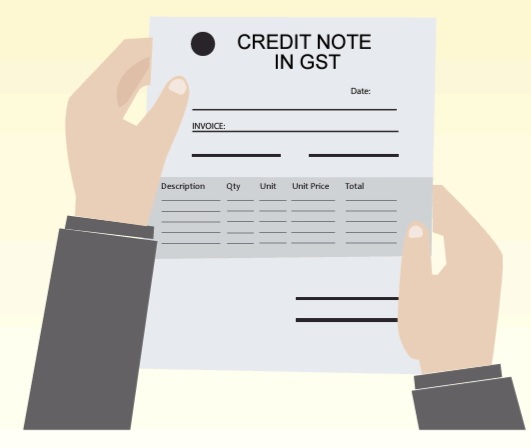A credit note under the Goods and Services Tax (GST) framework is an essential document for rectifying discrepancies in the original tax invoice. The 55th GST Council meeting introduced critical amendments to the treatment of credit notes, ensuring enhanced compliance, streamlined processes, and clarity in tax adjustments. This article delves deep into the concept of credit notes, their purpose, mandatory details, implications, and the recent changes announced.
What is a Credit Note Under GST?
A credit note is issued by a supplier to adjust the taxable value or tax charged in the original invoice in specific circumstances. This document is vital for maintaining transparency and compliance within the GST system.
Common Reasons for Issuing a Credit Note:
- Overvaluation: When the declared value exceeds the actual value of goods or services.
- Excess Tax Charged: If a higher tax rate than applicable was charged.
- Quantity Discrepancy: When the recipient receives fewer goods than invoiced.
- Quality Issues: If goods or services are deficient or unsatisfactory.
- Other Adjustments: Any other circumstances requiring reimbursement.
Upon issuing a credit note, the supplier’s output tax liability is reduced, provided the recipient correspondingly adjusts their input tax credit (ITC).
Mandatory Details in a Credit Note
While GST law does not mandate a specific format, a credit note must contain the following details:
| Field | Requirement |
|---|---|
| Name, Address, GSTIN of Supplier | Identifies the credit note issuer. |
| Nature of Document | Clearly marked as a “Credit Note.” |
| Serial Number | Unique for each financial year. |
| Date of Issue | Date when the credit note is issued. |
| Details of Recipient | Name, address, and GSTIN (if registered). |
| Tax Invoice Details | Serial number and date of the original tax invoice. |
| Taxable Value and Tax Rate | Value and tax credited to the recipient. |
| Signature/Digital Signature | Authorized representative’s signature. |
Adjustment of Tax Liability
To adjust tax liability, the supplier must declare the credit note in their GST return for the month it is issued. However, this must be done no later than:
- 30th November following the end of the financial year, or
- The date of filing the annual return, whichever is earlier.
The supplier’s output tax liability is reduced only if the recipient reduces the corresponding ITC. Any discrepancies lead to a process of matching and rectification.
Matching and Rectification Process:
- Matched Claims: The supplier’s liability reduces when the recipient reduces ITC proportionately.
- Unmatched Claims: Discrepancies are communicated to both parties for resolution.
- Duplicate Claims: These are added back to the supplier’s tax liability.
Amendment to Section 34(2) of the CGST Act, 2017
The 55th GST Council Meeting introduced a significant amendment to Section 34(2), which now explicitly mandates:
- The recipient must reverse ITC attributable to a credit note before the supplier can reduce their output tax liability.
Implications of the Amendment:
- For Suppliers: Reduction in output tax liability depends on the recipient reversing the ITC.
- For Recipients: Recipients must take action (accept/reject) through the Invoice Matching System (IMS).
- If Accepted: The supplier’s liability reduces, and the recipient’s GSTR-2B reflects the adjustment.
- If Rejected: The supplier’s liability increases in the next GSTR-3B.
Example: Practical Illustration
Original Invoice Details:
- Taxable Value: ₹1,00,000
- GST (18%): ₹18,000
- Total: ₹1,18,000
Credit Note Details:
- Reduction in Taxable Value: ₹10,000
- GST: ₹1,800
- Total Credit Note Value: ₹11,800
Recipient’s Action: Reverse ITC of ₹1,800 in their GST return.
Supplier’s Action: Reduce output tax liability by ₹1,800 upon recipient’s ITC reversal.
Time Limit for Record Retention
Credit note records must be retained for 72 months from the due date of filing the annual return for the financial year to which they pertain. These records should be easily accessible and maintained digitally or manually as per business needs.
Credit-Note-under-GST

Hi, I’m Vishal
Founder of FinTaxExpert.in, with 7+ years of experience in taxation, audits, and corporate finance.
✍️ I’m passionate about writing and researching in the fields of taxation and finance.
📖 Learn more about us at FinTaxExpert.in.


I love how you incorporate personal stories and experiences into your posts It makes your content relatable and authentic
Thank you so much for your kind words! I truly appreciate you taking the time to share this. Knowing that my personal stories resonate with you means a lot and motivates me to keep creating authentic content. If there’s any topic or experience you’d like to see more of, feel free to let me know!